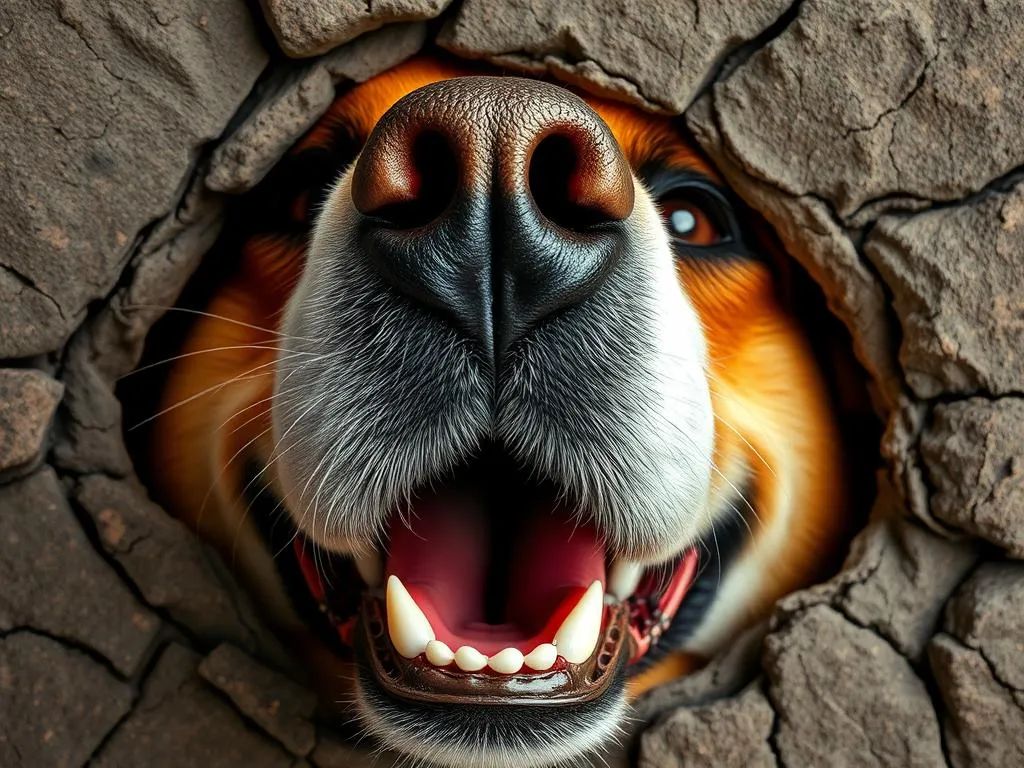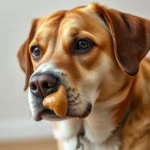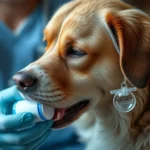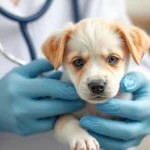
When it comes to our furry companions, oral health is often overlooked. However, noticing abnormalities—like a dog hole in mouth—can be concerning for any pet owner. Understanding what might cause such issues and knowing when to seek veterinary advice is crucial for maintaining your dog’s overall health.
Understanding the Anatomy of a Dog’s Mouth
Basic Structure of a Dog’s Mouth
The dog’s mouth is a complex structure comprising several components, including the gums, teeth, tongue, and soft tissues. The gums, or gingiva, play a vital role in supporting the teeth and protecting the underlying bone. The teeth are designed not only for eating but also for grooming and defense. A dog’s oral cavity is lined with soft tissues that help in the overall function of eating, drinking, and communication.
Maintaining good oral health in dogs is essential not just for their mouth but for their overall well-being. Poor dental hygiene can lead to various health issues, including infections that can affect other organs.
Common Oral Health Issues in Dogs
Several prevalent dental problems can affect dogs, leading to significant health concerns:
- Periodontal Disease: This is the most common dental issue faced by dogs, characterized by inflammation of the gums and surrounding structures. If untreated, it can result in tooth loss and systemic health issues.
- Tooth Decay: Just like humans, dogs can suffer from cavities caused by bacteria and plaque buildup.
- Oral Tumors: Both benign and malignant tumors can develop in a dog’s mouth, sometimes appearing as holes or lesions.
These issues can impact not only your dog’s quality of life but also their longevity. That’s why it’s essential to keep an eye on their oral health.
Identifying a Hole in a Dog’s Mouth
Signs Your Dog May Have a Hole in Its Mouth
If you suspect your dog may have a hole in its mouth, be vigilant about observing specific symptoms. Common signs include:
- Drooling: Excessive drooling can indicate discomfort or pain.
- Bad Breath: Foul-smelling breath, especially if unusual, can signal oral health issues.
- Discomfort While Eating: If your dog is hesitant to eat or shows signs of pain while chewing, it may be a warning sign.
- Swelling: Noticeable swelling in the mouth or face can accompany the presence of a hole.
During routine checks, look for visual signs such as unusual lesions, bleeding, or changes in gum color.
Possible Locations of the Hole
Holes can occur in various parts of a dog’s mouth:
- Gums: The most common site, often resulting from periodontal disease or trauma.
- Tongue: Injuries or infections can lead to holes in the tongue.
- Palate: A hole in the hard or soft palate can indicate more severe issues.
Understanding the location of the hole can help determine potential causes and appropriate treatment.
Potential Causes of a Hole in a Dog’s Mouth
Trauma and Injury
Trauma is a frequent cause of holes in a dog’s mouth. Common injuries include bites from other animals or accidents that cause lacerations. Signs of trauma can include swelling, bleeding, and visible wounds. If you suspect trauma, monitor your dog closely for signs of pain and consult your veterinarian if symptoms worsen.
Infections and Diseases
Infections can also lead to the development of holes in a dog’s mouth. Bacterial infections, such as those resulting from periodontal disease, can create abscesses that may rupture, causing holes. Other diseases, like canine distemper or fungal infections, can also lead to oral lesions. Watch for symptoms such as fever, lethargy, and changes in appetite, which may indicate an underlying infection.
Tumors and Growths
Both benign and malignant tumors can manifest as holes or lesions in the mouth. Early detection is vital, as some tumors can quickly progress and necessitate urgent veterinary intervention. Regular veterinary check-ups can help catch these issues early, so don’t hesitate to ask a vet if you notice any abnormalities.
Genetic and Breed-Specific Issues
Certain dog breeds are predisposed to specific dental issues or oral abnormalities. For example, brachycephalic breeds (like Bulldogs and Pugs) are more prone to dental crowding, which can lead to periodontal disease. It’s essential for dog owners to be aware of their breed’s predispositions and monitor their pets’ oral health accordingly.
When to Ask the Vet
Recognizing Urgency
Knowing when to seek veterinary care is crucial. Situations requiring immediate attention include:
- Severe Bleeding: Continuous bleeding from the mouth can indicate serious injury.
- Difficulty Breathing: If your dog is having trouble breathing, it could be a sign of a severe issue.
- Severe Pain: Signs of distress, such as whining or reluctance to eat, warrant a vet visit.
If you notice any of these symptoms, don’t hesitate to reach out to your veterinarian.
Preparing for Your Vet Visit
When preparing for your veterinary appointment, consider gathering the following information:
- History: Document any changes in behavior, diet, or symptoms you’ve observed.
- Questions: Prepare a list of questions to ensure you cover all concerns during your visit.
- Visual Evidence: If possible, take photos of the affected area to share with your vet.
This preparation can help your veterinarian diagnose the issue more effectively.
Diagnostic Procedures
Veterinary Examination Techniques
During your visit, your veterinarian will conduct a thorough oral exam. They may use specialized tools to assess the health of your dog’s gums, teeth, and soft tissues. This examination is crucial in determining the underlying cause of the hole.
Understanding Test Results
Your vet may recommend additional tests, such as X-rays or biopsies, to get a clearer picture of the situation. Understanding these tests can help you make informed decisions about your dog’s treatment plan. Don’t hesitate to ask your vet to explain any medical jargon or results that you don’t understand.
Treatment Options
Medical Treatments
If your dog has a hole in its mouth due to an infection or another medical condition, your veterinarian may prescribe medications. Common treatments may include:
- Antibiotics: To combat bacterial infections.
- Pain Relievers: To alleviate discomfort during the healing process.
It’s essential to follow the prescribed treatment plan closely to ensure your dog recovers effectively.
Surgical Interventions
In certain cases, surgery may be necessary to address the issue. This could involve removing a tumor, repairing damaged tissues, or extracting a severely affected tooth. Discuss the potential risks and benefits of surgery with your veterinarian to understand what to expect during recovery.
Home Care and Management
After treatment, providing proper home care is vital. Here are some tips:
- Dietary Recommendations: Soft food may be necessary while your dog heals.
- Oral Hygiene Practices: Regular brushing and dental chews can help maintain oral health.
- Monitoring: Keep an eye on your dog for any signs of recurrence or complications.
Preventative Measures
Importance of Regular Veterinary Check-Ups
Routine veterinary visits play a crucial role in preventing oral health issues. Your veterinarian can perform professional cleanings and catch problems before they escalate. The recommended frequency for dental check-ups is at least once a year, but some dogs may require more frequent visits based on their health and breed.
Oral Hygiene Practices for Dogs
Maintaining oral hygiene at home is essential for your dog’s health. Here are some tips:
- Brushing: Brush your dog’s teeth regularly with dog-friendly toothpaste and a soft toothbrush.
- Dental Chews: Consider providing dental chews that can help reduce plaque buildup.
- Water Additives: Use dental water additives as directed to promote oral health.
Recognizing Early Warning Signs
Educating yourself on early warning signs can help you catch issues before they become severe. Monitor your dog for changes in eating habits, behavior, or oral health, and consult your veterinarian if you notice anything unusual.
Conclusion
Addressing oral health issues in dogs is critical for their overall well-being. If you ever notice a dog hole in mouth, don’t hesitate to ask a vet. Early intervention can make a significant difference in your dog’s health and comfort.
Being proactive about your dog’s oral care not only ensures a happier pet but also fosters responsible pet ownership. Regular check-ups, diligent monitoring, and good hygiene practices are all essential components of maintaining your dog’s oral health.









